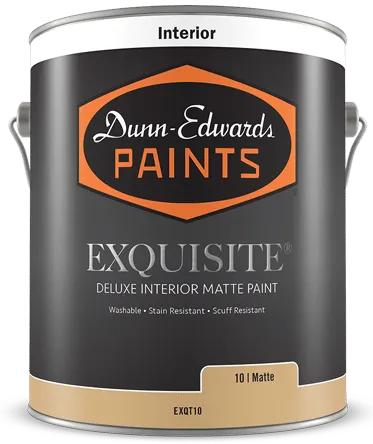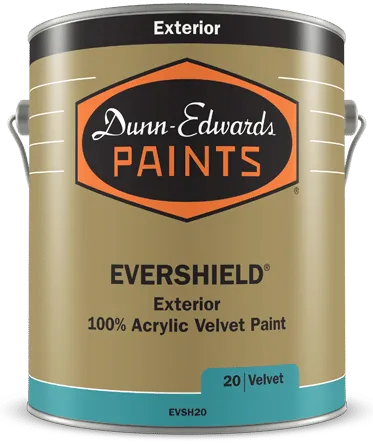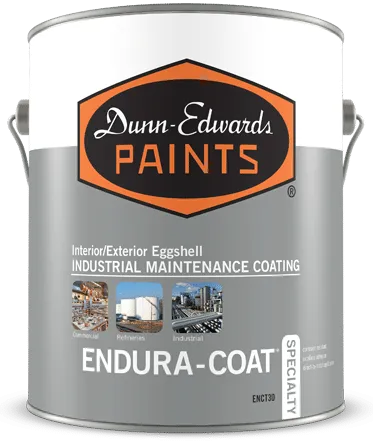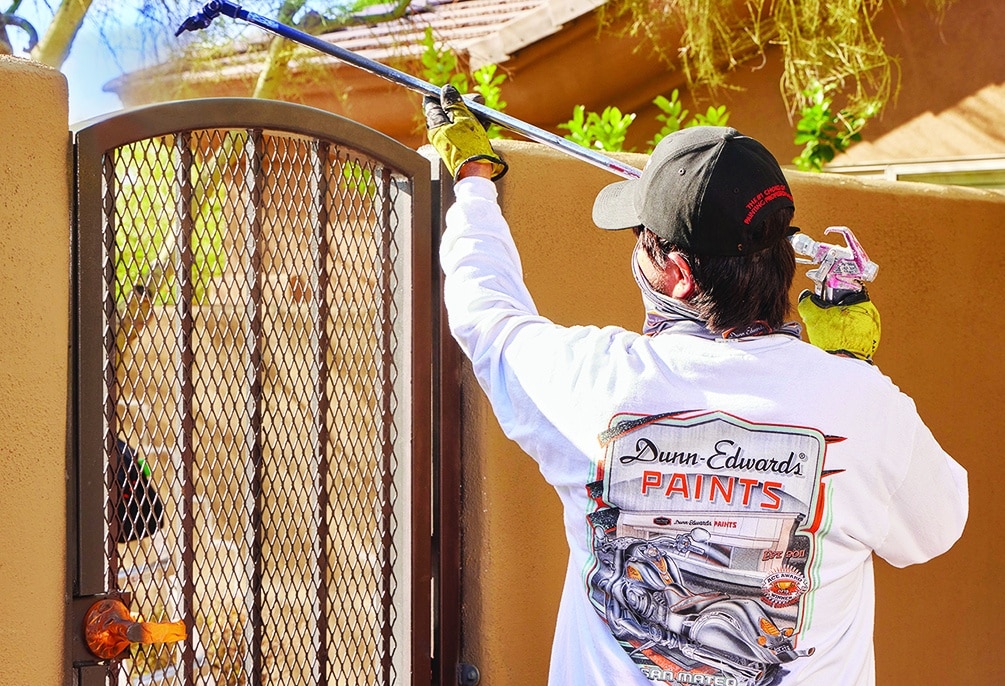Colorful Conversations: Exploring the Creative World of Sarah Locke
04/28/2025 | christinabantigue |
Sarah Locke, a heritage conservation professional with a background in interior design, brings a unique perspective to revitalizing buildings of the Modern Movement. In addition to her work with color and space, Sarah is deeply committed to preserving the history and character of the buildings she works on. Recently, she transformed her mid-century home using Dunn-Edwards paints, and we caught up with her to discuss her design choices, conservation work, and future projects.
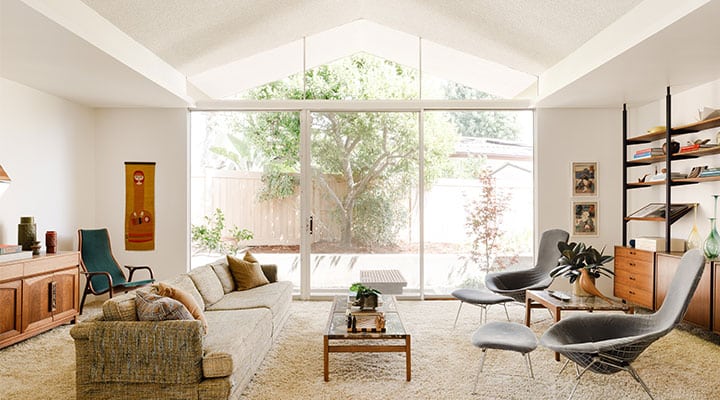
Let’s start with an introduction. Can you tell us a little bit about yourself and your background, and how you got into heritage conservation and design?
I always appreciated the potential in the beautiful, often neglected, old buildings in the rust belt city where I grew up. I noticed the same thing when I moved to Los Angeles –– there was so much to discover about the city’s midcentury architecture and I wanted to do my part to share that story. To learn more, I worked with the Los Angeles Conservancy’s Modern Committee and completed a Master of Heritage Conservation degree from the University of Southern California School of Architecture. My career spans nearly twenty years of protecting historic places through advocacy and landmark designation. I’ve also completed design and rehabilitation work for some amazing houses, including my own homes. My family and I feel incredibly lucky to be the second owners and stewards of the George and Esther Albert Residence, designed by architect Paul Tay in 1963.

A bold front door can set the tone for an entire home! What made you gravitate towards Dunn-Edwards DET494 Beachcombing for your front door and what kind of statement do you feel it makes?
This front door color makes me smile every time I arrive home! It was a bland shade of peach when we bought the house, but a little digging beneath layers of paint revealed that the original color was similar to Beachcombing. The doors retain their original hardware, too. This type of glam entrance – bejeweled double doors in a bold shade – is a key moment for a Contemporary Ranch house and a low-risk place to experiment with color.
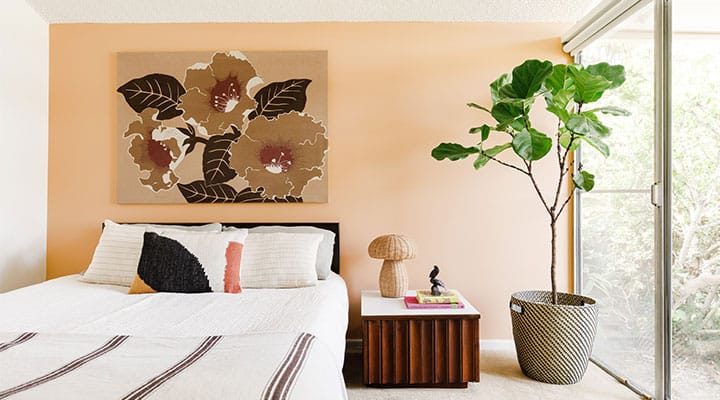
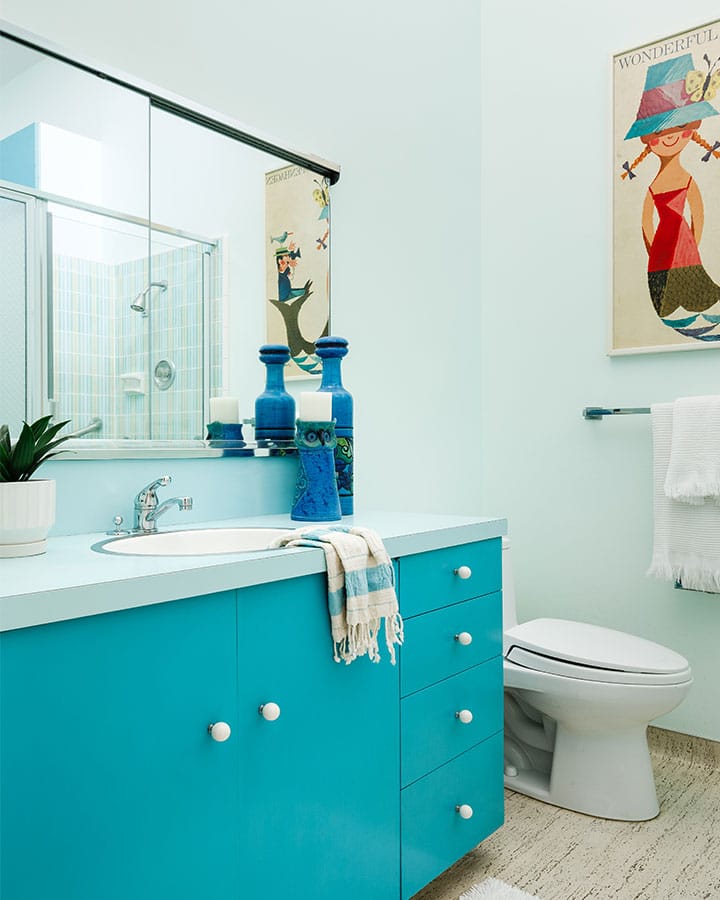

With DE6213 Fine Grain as your main outdoor stucco color and DET649 Carrara as the main interior color, what inspired you to sprinkle in vibrant hues in the bathrooms and kids' rooms? Do you have any tips on how to decide where to add those playful touches?
We were thrilled to find a home in mostly original condition. This included some of the paint colors, like in this statement-making bathroom with aqua laminate countertops and striped vintage tile. My husband affectionately calls it the “circus bath.” We removed non-original wallpaper and painted the walls DE5686 Soft Mint.
The cabinets in the second hall bath were painted white, but there were a few clues that the original color was a vibrant orange. We color matched with a low sheen finish in DE5166 Nectarine to complement the pink and orange laminate countertops and George Nelson’s Pomona Tile. The gold-flecked wallpaper was lost to time, but I’m not against bringing it back! For now, the walls are DE5154 Pale Nectar to give the room a rosy glow. Playful shades were certainly the vibe in the 60s and I fully embrace that color washing is trending again. If you have a midcentury home, don’t be afraid to go bold!
What role does color play in your work as a conservationist? How do you approach color choices when it comes to blending new designs or trends with historical integrity?
Color plays an integral role in any design and can help celebrate the character of historic spaces. Research and investigative tools, like a colorimeter, help determine original or period-appropriate choices that connect a place to its’ past. Not every space requires a purist approach though. The goal is to anchor your color selections to a cohesive plan and consider the reversibility of your decisions. While painting original wood or brick might achieve a current look, it’s not an easy fix down the road when the trend inevitably swings back the other direction. Plus, such changes often quickly look dated and out of place. If you honor the original vision of the design, you’ll achieve long-lasting results.
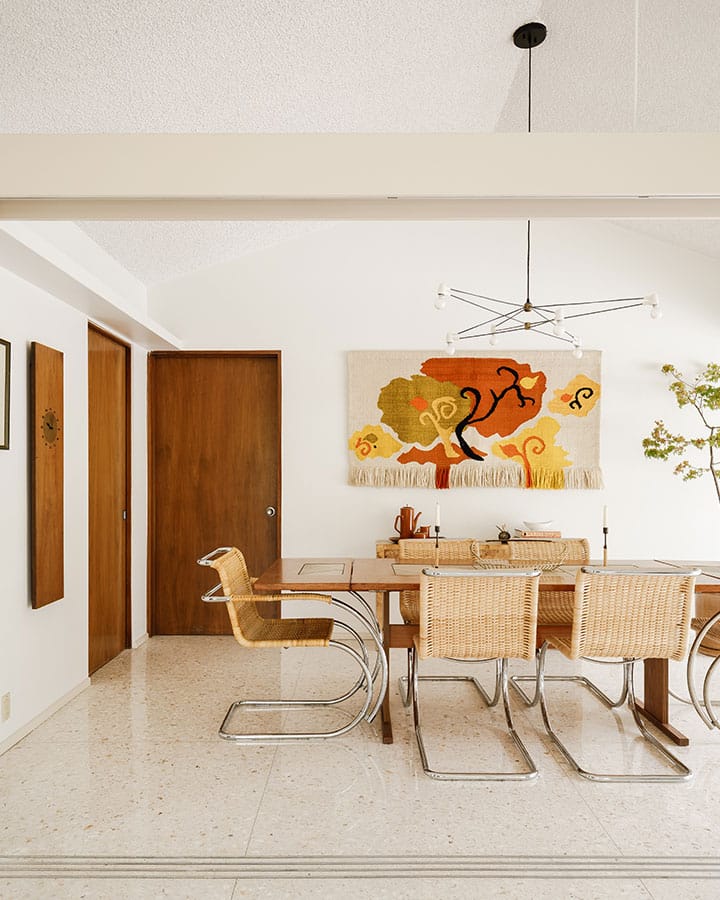
The home’s design is rooted in the vision of the renowned architect, Paul Tay. Can you tell us more about his work and any interesting elements or challenges you encountered while preserving and updating the space with his original design in mind?
Paul Tay was a Long Beach-based architect who graduated from USC in 1950. That was prime time for a young, talented architect because there was an exceptional need for housing after World War II. He completed more than fifty projects in Southern California, primarily in Long Beach. Most were residential commissions in the Contemporary Ranch-style, but he also designed churches, commercial buildings, and the Burnett branch of the Long Beach Public Library (1969).
The challenge with buying a home in original condition is determining where changes need to be made to make it comfortable for today’s lifestyle. There are many approaches to this and it depends on the family, but it’s important to keep in mind that original features can’t easily be put back.
What advice would you give to someone looking to incorporate heritage conservation into their own home or renovation project?
Take time to understand the design language of a house before rejecting the original layers in favor of the latest trends. Dig a little deeper into the history of your space and look beyond current magazines and online sources for inspiration from the period, like vintage magazines. There’s no need to copy things exactly, but take the time to learn what speaks to you and use that as a starting point. Strike a balance between old and new by considering all the layers to find opportunities to incorporate a fresh perspective without making irreversible changes — paint and wall coverings, as well as furniture, lighting, and accessories. We stored the original dining chandelier, for example, in favor of a simpler pendant from Ravenhill Studio. Textiles from current makers, like House 23, add a contemporary layer of texture and color. Find vendors with a unique point of view, like 6th and Detroit and Back Alley Finds, to weave in period pieces that still feel relevant.
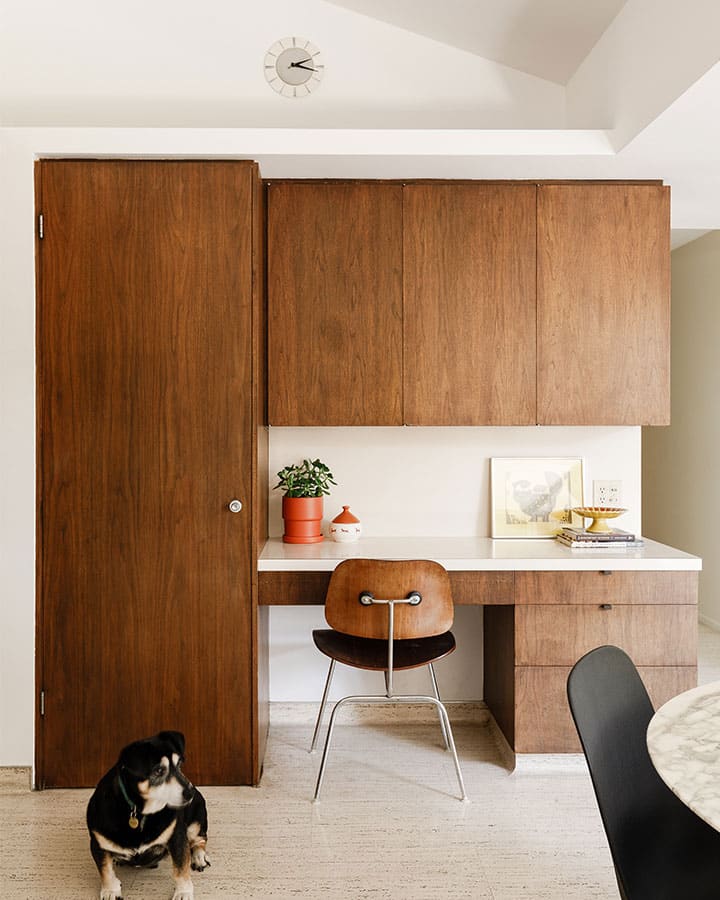

How can people stay in touch with you and learn more about your work?
The root of heritage conservation is telling a story about the past through place. I’m currently exploring a new facet of such work in planning a museum exhibition on the legacy of a master architect, but I can’t share the details just yet. I’m also the president of the Southern California chapter of Docomomo US, a nonprofit dedicated to the documentation and conservation of the Modern Movement. We create opportunities for design enthusiasts to connect in interesting places all over SoCal, like this past year at Charles Moore's Burns House and the Raphael Soriano-designed Kimpson-Nixon House. Los Angeles is also the host of Docomomo’s international conference in March 2026, which will offer exclusive tours and programming. Follow @docomomosocal for more and you can find me on Instagram at @LBModern.
All photography by Sterling Reed



